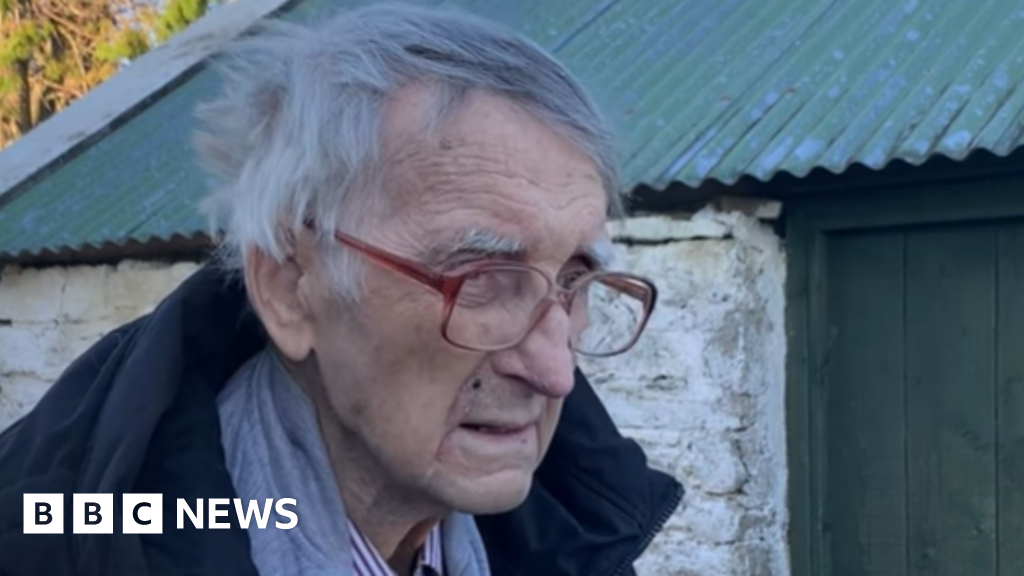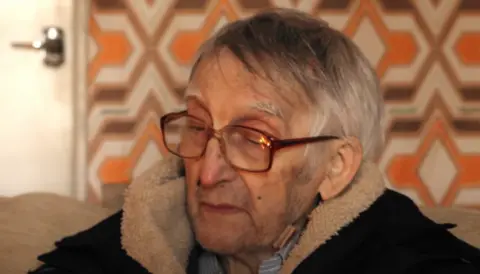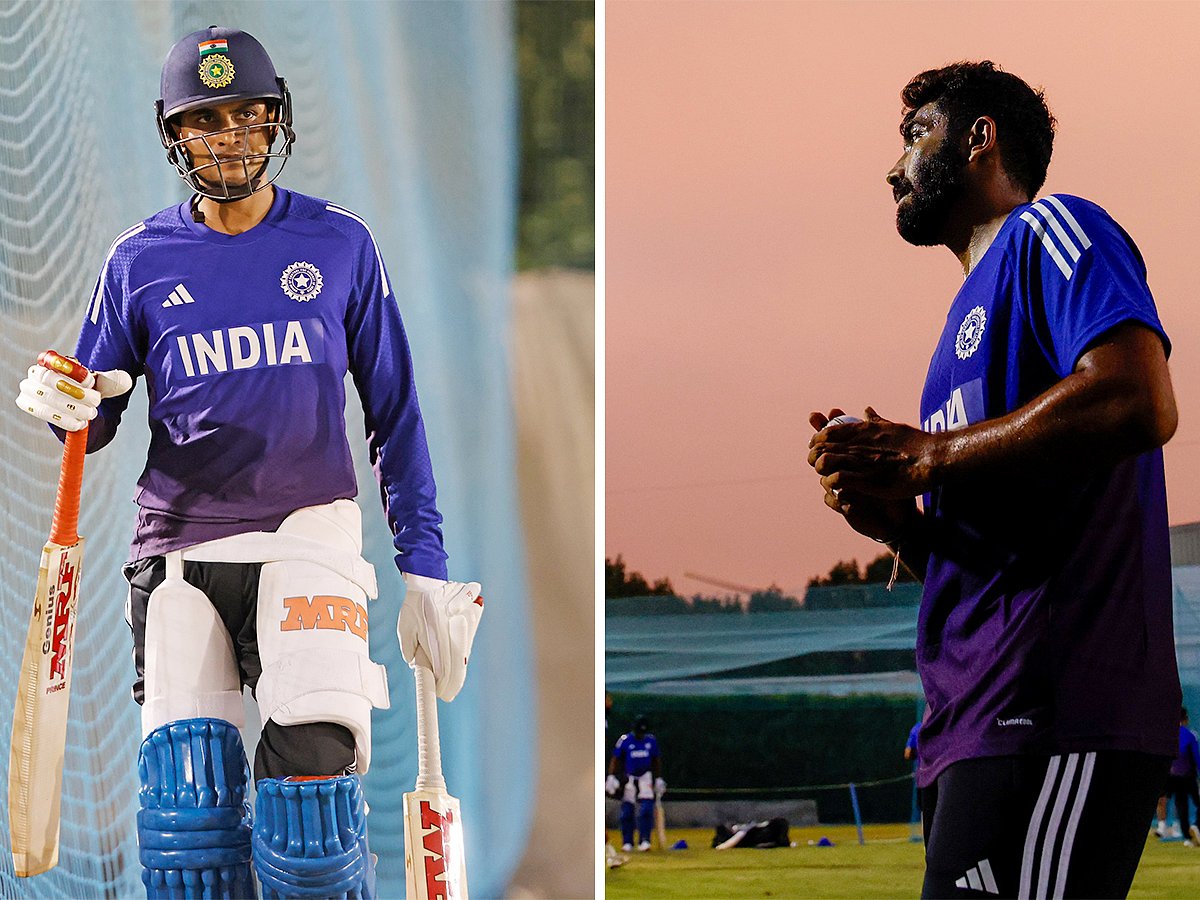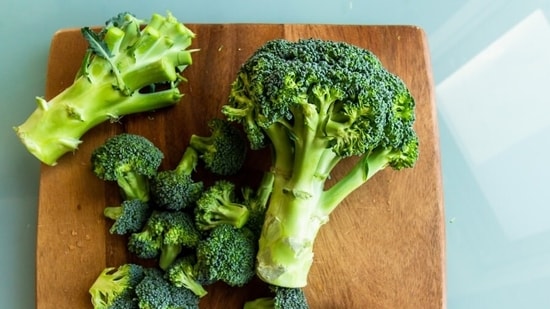
A short film which shares the life teachings of a 94-year-old Donegal farmer has won a number of industry awards.
Echoes of an Irish Lifetime, a debut film by Frances Maguire, reflects the simple and quiet life of her uncle, Owney McGoldrick who has a farm in Pettigo.
To date it has won eight international film awards and has been selected to screen at six international film festivals across the world.
Director Frances said when she told Owney about the film’s success he laughed and replied: “What would people want to see an old man like me for?”
 Frances Maguire
Frances MaguireMr McGoldrick has farmed in the west of Ireland and has lived in the same house for his entire life.
“It’s such a non-spoiled part of the world as well, where the modern world hasn’t touched it,” she said.
“Nothing is modern about his house or outside, and that’s what’s actually really beautiful.
“The 94 years are there to be seen clearly and I think that’s what’s so rich about the story.”
Frances told BBC News NI her family lived with Owney in the house for the first 13 years of her life.
 Frances Maguire
Frances MaguireFrances worked at the post office before she decided to study Film and Media Production at the Atlantic Technological University (ATU) in Donegal.
“At the back of my mind was always filmmaking because I always had an interest in that from a young age,” she said.
“But then, that’s just not the way life went for me because I had my family.”
When Frances was tasked with making the film as part of her dissertation final, she was inspired to share Owney’s “poignant, beautiful story”.
At first, Frances said she wasn’t sure if Owney would be willing to take part because he is “very private” but he was “delighted” to tell Frances stories.
 Frances Maguire
Frances MaguireReacting to the success of the short film, Frances said she was “really shocked”.
“I know his story is beautiful. It’s beautiful to me because it’s my uncle,” she said.
“But I am looking at it from other people’s point of view and I’m thinking: ‘okay, so they all think the same’.”
In the local town, where Frances said her uncle is “highly respected”, there has been high praise for the film, with many commenting on how “lovely” it is to have a film about Owney.
“People would think fondly of him… and we as a family know how important that is and that the significance of the house as well because it’s such an old house, it’s [been] in the family for so many generations.”
 Frances Maguire
Frances MaguireFrances said in the world of film, Owney’s story is “very unique”.
“There’s so little people left of that generation that have lived on their own their whole life, that have had no family and stayed in the same house their whole life.
“We don’t understand them because we didn’t grow up in that era. But he understands.
“It was really, at the end of the day, all about a simple life and I think that’s what’s resonating with people and the judges in the film festivals.”


President Donald Trump blasted the European Union on Friday, September 9 after regulators fined US tech giant Google nearly $3.5 billion for breaking competition laws. Trump called the move “unfair” and warned of retaliatory tariffs if the penalty is not withdrawn. Sharing a post on Truth Social, Trump wrote: “Europe today “hit” another great American company, Google, with a $3.5 Billion Dollar fine, effectively taking money that would otherwise go to American Investments and Jobs.” “Very unfair, and the American Taxpayer will not stand for it! As I have said before, my Administration will NOT allow these discriminatory actions to stand,” he continued.Trump’s remarks comes days after he hosted a high profile dinner at White House with tech CEOs that included also included Google CEO Sundar Pichai. At the dinner, Trump congratulated Pichai on Google’s recent legal triumph. The exchange followed a landmark antitrust ruling that saw Google avoid a court-ordered breakup.“Well you had a very good day yesterday,” Trump said to Pichai, “Google had a very good day yesterday. Do you want to talk about that big day you had yesterday?”
According to a New York Times report, the European Commission, the executive branch of the 27-nation bloc, accused Google of breaching antitrust laws by using its size and dominance to control the display advertising business, undercutting rivals. It said that Google had abused its dominance that indirectly hurt rival providers of advertising technology. Google’s control over the ad-tech supply chain allows it to see pricing information that rivals cannot access, the regulators accused.
In the Truth Social post, Trump said:Europe today “hit” another great American company, Google, with a $3.5 Billion Dollar fine, effectively taking money that would otherwise go to American Investments and Jobs. This is on top of the many other Fines and Taxes that have been issued against Google and other American Tech Companies, in particular. Very unfair, and the American Taxpayer will not stand for it! As I have said before, my Administration will NOT allow these discriminatory actions to stand. Apple, as an example, was forced to pay $17 Billion Dollars in a Fine that, in my opinion, should not have been charged — They should get their money back! We cannot let this happen to brilliant and unprecedented American Ingenuity and, if it does, I will be forced to start a Section 301 proceeding to nullify the unfair penalties being charged to these Taxpaying American Companies. Thank you for your attention to this matter!DONALD J. TRUMP, PRESIDENT OF THE UNITED STATES OF AMERICA

Cracks between Pakistan and China became more apparent after reports emerged that Beijing has withdrawn funding for the
Karachi-Rohri railway project, a key part of the China-Pakistan Economic Corridor. According to The Economic Times, China cited financial and security concerns for its move.
In light of this, Pakistan is now seeking funds for the
Asian Development Bank to salvage the project. It is pertinent to note that China’s decision also follows its frustration over unpaid debts to Chinese power companies. However, the key concern for Beijing remains security issues for Chinese nationals working on numerous infrastructure projects in Pakistan.
China’s decision not to finance the Karachi-Rohri railway segment being built under its Belt and Road Initiative (BRI) reflects that its “
all-weather friendship” with Pakistan is notwithstanding. The change in the ties between the two nations is also coming at a time when China is mending its ties with India.
According to The Economic Times, the Chinese authorities expressed frustration over Pakistan’s unpaid debts, particularly $1.5 billion owed to Chinese power companies. Moreover, since 2021, several Chinese nationals working on BRI projects in Pakistan have been killed by separatist and terrorist groups operating in the country.
The Karachi-Rohri section of Main Line 1 Railway was previously expected to receive $2 billion from China. However, it had been left unfunded, leaving Pakistan to knock on the doors of the Asian Development Bank (ADB), seeking urgent funds to salvage the second phase of the China-Pakistan Economic Corridor (CPEC), sources told The Economic Times.
China also expressed concern over the security of its nationals in Pakistan while speaking to the country’s Field Marshal Asim Munir. Earlier this year, Beijing sought permission to deploy its military for the protection of its nationals in Pakistan.
Source told The Economic Times that Pakistan’s loan request to the Asian Development Bank involves upgrading 480 kilometres of the Karachi-Rohri railway segment. The total cost of the project is estimated to be $6.7 billion, covering the entire 1,726-kilometre stretch from Karachi to Peshawar.
The railway network is considered central to the CPEC and will be used for transporting goods as well as minerals extracted in the mineral-rich Balochistan province. The cracks between China and Pakistan are also coming at a time when Islamabad is improving its relations with the United States.
Earlier, Pakistan had indicated that it would offer the US opportunities in Balochistan’s mining sector. However, the US’s commercial or security presence in Balochistan may impact China’s wide-ranging interests in the province, a source told ET.
Under the BRI, China has announced that it will invest more than $50 billion in Pakistan. In light of this,
Gwadar Port has been constructed, and plans for a naval base are currently underway. On Thursday, Pakistan’s energy ministry announced that ADB had approved a $130 million loan for the country’s energy sector.
Apart from this, Pakistan has also sought assistance from international partners, including the ADB, to improve its energy infrastructure by modernising its transmission system and promoting renewables.

Serious conditions like heart attacks were initially thought to affect older adults who had crossed middle age. But lately, heart attack scares are showing up more in young adults, as young as their 20s and 30s. Dr M Srinivasa Rao, regional clinical director and senior interventional cardiologist at CARE Hospitals, Banjara Hills in Hyderabad, also warned, revealing that many young adults are ending up in the hospital with very serious cardiac issues.
ALSO READ: Cardiologist shares 5 compelling reasons to eat more home-cooked meals instead of ordering food online
Poor lifestyle is the biggest contributor to this surge in heart issues, as Dr Rao told HT Lifestyle that there are many lifestyle factors, along with genetic predisposition, responsible for increasing the risks of cardiac issues in young adults. He elaborated, “Long work hours, stress, irregular sleep, fast food habits, undiagnosed high blood pressure, elevated cholesterol, diabetes, and a family history of heart disease. Even everyday exposure to pollution or occasional smoking can quietly damage arteries.”
Another common misconception is that poor health will also affect one’s appearance. However, this is not always the case; one may appear fine from the outside, but the damage has already started inside. Dr Rao warned, “A young adult might look fit on the outside, but early plaque can already be forming inside their blood vessels.”
This is why heart health cannot be pushed down the list of urgent priorities. People in their 20s and 30s are often more focused on skincare routines, treating early fine lines with retinol (as one should), but it’s also vital to pay attention to things that were earlier thought to be a concern in midlife- like cardiac health.
Right from the beginning, lifestyle needs to be changed, embracing healthier habits not just once in a while, but as a regular part of life. One of the essentials for keeping the heart healthy is staying active, even in small ways like taking stairs instead of the lift. He called it, “Consider exercise as giving your heart a daily workout rather than waiting for the weekend gym session.”
Dr Rao shared five tips young adults should follow to protect their hearts:


ALSO READ: Take the stairs over lift: Study reveals just 3 minutes of daily movement can reduce heart attack and stroke risk



It is vital to change negative habits and embrace healthier ones as heart attack is not waiting until middle age to hit, so don’t treat early adulthood like 20s and 30s as your lively years to ‘enjoy’ and openly neglect health.
Note to readers: This article is for informational purposes only and not a substitute for professional medical advice. Always seek the advice of your doctor with any questions about a medical condition.

OpenAI’s recently appointed CEO of applications, Fidji Simo, announced in a company post that the OpenAI Jobs Platform aims to connect businesses with AI-skilled workers. According to Simo, the platform will “use AI to help find the perfect matches between what companies need and what workers can offer”.
“We also realize that anyone looking to hire, whether it’s through the Jobs Platform or elsewhere, needs to trust that candidates are actually fluent in AI. Most businesses, including small businesses, think AI is the key to their future. And most of the companies we talk to want to make sure their employees know how to use our tools,” Simo said.
The hiring platform will also focus on small businesses and local governments seeking AI talent, she added. The Texas Association of Business plans to use the platform to connect thousands of Texas employers with AI-ready workers.
Interestingly, OpenAI’s platform challenges LinkedIn, cofounded by Reid Hoffman, one of OpenAI’s early investors. He was also on the company board till March 2023. Hoffman quit to avoid conflicts of interest with his AI investments through Greylock Partners and his role in founding Inflection AI.
Certification programme
OpenAI will also pilot its certification programme in late 2025, with courses covering AI fluency, from basic workplace applications to advanced prompt engineering.
Retail giant Walmart is one of the major launch partners for this initiative.
The certification programme allows users to prepare for certification directly within ChatGPT’s Study mode, and companies can integrate it into their learning and development programmes. “We realise that upskilling or reskilling programs have a mixed record, and haven’t always led to better jobs or higher wages. But we’ve studied what has and hasn’t worked in the past, and are designing our programmes to better serve the needs of both workers and companies,” Simo explained in the post.
Jobs versus AI
The announcement of an AI-powered jobs platform comes amid conversations around the technology erasing hundreds of thousands of entry-level jobs across sectors. Anthropic CEO Dario Amodei had recently remarked that AI could eliminate up to 50% of entry-level white-collar positions by 2030. Simo acknowledged this disruption in her blog post, stating that while OpenAI “can’t eliminate that disruption,” the company can help people become AI-fluent and connect them with employers.

Australia sees so little international contemporary dance – considered too far and too expensive a journey, with too small a dedicated dance audience to make it worthwhile. What does appear is mostly in Melbourne and Sydney. So it’s a curious coup for Brisbane festival to land the second visit to Australia by L.A. Dance Project – the troupe founded by the former New York City Ballet principal Benjamin Millepied – after the Sydney Opera House’s presentation of his contemporary, genderqueer Romeo and Juliet Suite last year.
For this year’s Brisbane festival, L.A. Dance Project presented a trilogy of contemporary ballets – commissioned between 2013 and 2016 for the company’s key funder, Van Cleef & Arpels – on the theme of gems. It’s not as far-fetched as it sounds. There’s precedent: NYCB founder George Balanchine’s landmark 1967 abstract ballet Jewels was inspired by the French jewellery company’s wares, with each of its three acts a tribute to a different precious stone.
While Millepied’s Gems trilogy ostensibly takes the same source inspiration (rubies, diamonds and emeralds), the connection to jewels and Balanchine’s work ends there. Audiences are instead presented with three distinct works, each with its own design team. This is the first time they have been shown together. Presented in chronological order, it’s impossible not to read them as a progression through Millepied’s choreographic development – made more interesting by the fact the final work in the trilogy, 2016’s On the Other Side, got an overhaul ahead of its Brisbane showing.
In 2013’s Reflections, the influence of Jerome Robbins, godfather of contemporary American ballet and Millepied’s mentor, shows. The blend of balletic lyricism and playful, jazzy movement often feels like a genuine interaction between people, witnessed by chance, rather than a deliberate choreography performed to the audience.
The ballet is structured as a series of vignettes – duets, solos and groups of up to five – to David Lang’s music for solo piano, against a dramatic white-on-red text work by Barbara Kruger. Its words – STAY, emblazoned on the back of the stage; GO, on a curtain that drops across the middle of the stage partway through – offer a clue to the theme. The choreography, created in collaboration with founding L.A. Dance Project members, plays with bodies in relationship to one other, from romantic longing to platonic interdependence and play.
The most flawless of the evening’s works, Reflections is a showcase for the dancers’ superb technique. The duets are masterclasses in silken independence. A solo by Shu Kinouchi is stunning, his supple control and springy athleticism drawing a huff of appreciation from the audience. The piece’s variegated movement keeps it constantly – delightfully – surprising, along with playful interactions that feel intuitive and off-the-cuff.
But Hearts and Arrows (2014) is the crowdpleaser: short and exhilarating, set to music from Philip Glass’s popular Mishima soundtrack that is performed live by members of Queensland’s chamber orchestra Camerata. If the choreography feels less distinctive and original than Reflections, it’s also a more perfect marriage of music and movement, with Glass’s propulsive score matched by buoyant athleticism in dazzling whole-of-ensemble formations.
It’s less impeccably executed than Reflections, but the dancers are clearly having fun, and seem fuelled by the music as if it were an electric current. The energy is irresistible and it’s impossible to look away – belatedly, you realise you’ve been holding your breath.
On The Other Side feels like the weakest link: its score – a selection of solo piano music by Glass – is less coherent and dramatic; the set design – a massive backdrop featuring the work of the abstract artist Mark Bradford – is the evening’s least theatrical; the dancers’ execution here feels the least confident; and the choreography is less obviously pleasing than in the earlier works.
But there’s something heartfelt here, particularly in melancholic duets and in a solo by Courtney Conovan that feels more like a spontaneous expression of the soul than something rehearsed. Sequences of interplay between individuals and the group invoke a meditation on community in a daunting world – though ultimately with slim consolation, ending on a strikingly sombre note with the ensemble huddled together, trepidatious.
Gems is most striking as a chance to see a strain and calibre of international dance that audiences arenot often exposed to in Australia. So it was disappointing to see the audience dwindle significantly across the evening’s two intervals – and the local musicians receiving the lion’s share of applause at each curtain call felt almost churlish. It consolidated the sense that Millepied’s trilogy was a bold choice of headliner for the festival’s opening weekend.
Gems runs until 7 September at Queensland Performing Arts Centre, Brisbane, as part of the Brisbane festival.